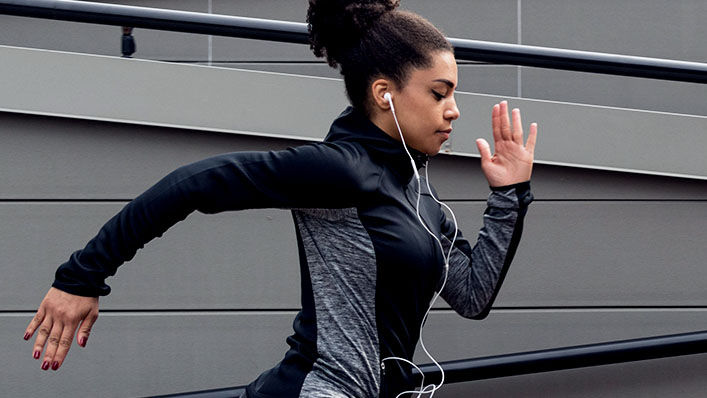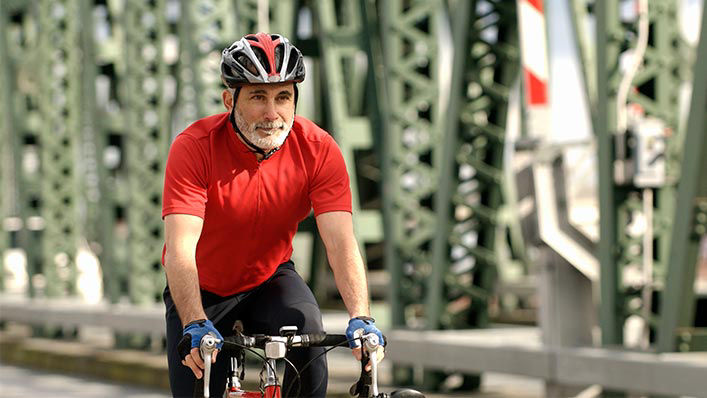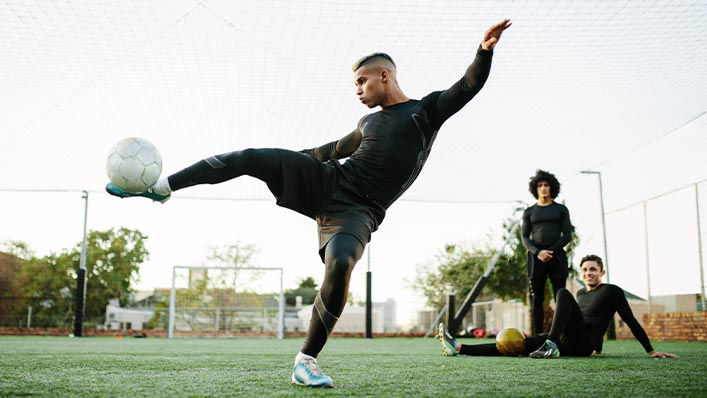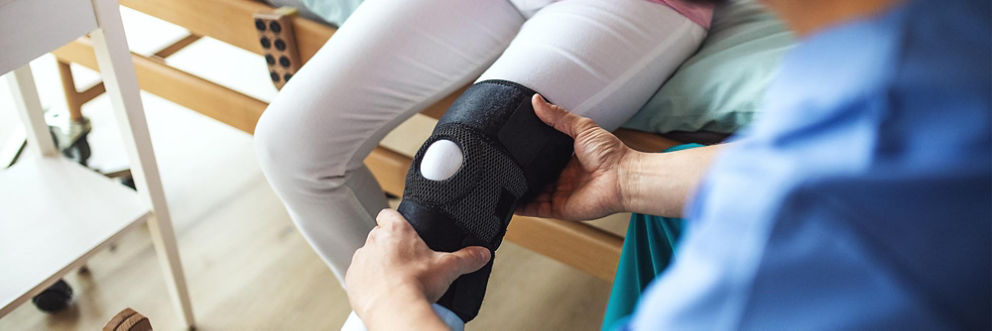Knee ligament injuries
Orthopedic treatment for ACL, PCL and MCL injuries
Our knees are built to be durable, supporting us when we run and jump. When we play hard, our knees work hard. But landing the wrong way, taking a hard impact or abruptly changing direction can cause knee ligament injuries.
A torn anterior cruciate ligament (ACL) and other knee ligament injuries can be painful and difficult to manage. Our orthopedists, sports medicine doctors and physical therapists will work with you to help you recover from your injury and get back to the activities you love. We use the latest treatments, including our own specialty programs designed for runners, soccer players, cyclists and other athletes, to repair even the most severe ligament injuries.
"I felt like I had the best care I could have received across the board. Every doctor, nurse and staff member was knowledgeable, helpful and understanding."
What are knee ligaments?
Ligaments are elastic tissue that connect and stabilize joints and the bones surrounding them. The ligaments in the knee connect the thighbone (femur) and the shinbone (tibia).
There are four main knee ligaments. The anterior cruciate ligament (ACL) and posterior cruciate ligament (PCL) cross to form an “X” shape inside the knee. And the two collateral ligaments work together to provide additional stability – the medial collateral ligament (MCL) supports the inside the knee while the lateral collateral ligament (LCL) supports the outside.
Although these ligaments are strong and built to support us while we move, they can be injured from pivoting, stopping abruptly, jumping or direct impact to the knee. Though athletes are at a higher risk of experiencing a knee ligament injury, they can happen to people of all ages and activity levels.
Symptoms of knee ligament injuries
- Popping noise at time of injury (ACL, PCL)
- Pain in knee (ACL, PCL)
- Severe pain inside of knee (MCL)
- Swelling around injured area (ACL, PCL, MCL)
- Instability (ACL, occasionally with PCL)
Types of knee ligament injuries
Though any ligament in your knee can be injured, the most common injuries affect the anterior cruciate ligament (ACL), posterior cruciate ligament (PCL) and medial collateral ligament (MCL).
Anterior cruciate ligament (ACL) injuries
The ACL is the most commonly injured knee ligament and is usually injured by sharp twisting motions. Sharply turning your knee in a different direction from your feet can cause a ligament tear, sprain or strain. Athletes who are active in impact sports like football, basketball or skiing have a higher likelihood of injuring the ACL.
Common symptoms of ACL injuries include a popping sound after the injury, your knee giving out, pain and swelling within 24 hours of the injury, loss of range of motion, and instability or discomfort when walking.
Posterior cruciate ligament (PCL) injuries
A PCL tear or other injury can be caused by hitting the shinbone hard right below the knee or landing on a bent knee. Though PCL injuries are typically seen in athletes who play football or soccer, we also see patients come in with PCL injuries from car crashes. This is called a “dashboard injury” and it occurs when the knees hit the dashboard during a crash.
Symptoms of PCL injuries include knee swelling within a few hours of the injury, pain, slight difficulty walking and a feeling that your knee is loose or might give way.
Medial collateral ligament (MCL) injuries
MCL injuries are caused by hard impacts to the outer side of your knee. A hard hit to the outside of the knee can overstretch the MCL and cause tears, sprains and strains. We tend to see MCL injuries in athletes who play contact sports like hockey or football.
Common symptoms of an MCL injury include pain on the inside edge of the knee, difficulty walking, feeling like you can’t put weight or pressure on the knee, knee instability and feeling like the knee catches when you move.
Treating knee ligament injuries
Depending on the type and severity of your knee ligament injury, we might recommend the following treatments:
Physical therapy
Our skilled team of physical therapists will create a personalized exercise plan to strengthen your lower body and take pressure off the knee ligaments. The exercise plan typically includes strength building exercises, stretches to improve your flexibility, and exercises that increase your range of motion.
During physical therapy, you’ll have one-on-one sessions with one of our physical therapists and get an exercise plan to work on at home to continue healing between sessions. We’ll also teach you how to adjust the way you move and perform daily activities to reduce knee pain and prevent future injuries.
Orthotics
Knee braces and other advanced
Surgery
When nonsurgical treatments aren’t an effective way to treat your ligament injury, we may recommend surgery. At TRIA, we’ll guide you toward surgery only when it’s the most effective treatment option for you.
We use surgery to repair ligaments that are completely torn or not properly attached to the bones. The type of surgery we use depends on the type of ligament injury and how severe it is. We’ll always use the most minimally invasive procedure possible to shorten your recovery time.
Specialty programs for knee ligament injuries

Sports Medicine Program
We understand athletes. We’ll work with you to develop a personalized plan to manage your knee ligament injury while helping you get back to your desired activity level safely, successfully and as quickly as possible.

TRIA L.E.A.P.®
TRIA L.E.A.P.® (Lower Extremity Agility Program) is a 6-week training program that teaches athletes to use their lower extremities with proper technique and form after a knee ligament injury. In a small group setting, our physical therapists and certified athletic trainers work with you to ensure proper technique as you are taken through a high-level program focused on agility, strength and stabilization.

Running Program
Our Running Program helps runners of all ages and levels return to running after injuries, including knee ligament injuries. Our team of physical therapists is passionate about running, and they understand the desire to get back in your running shoes. We have advanced training in treating running injuries and an in-depth understanding of running biomechanics so we can help you get back on the trails faster.

Cycling Program
We work with all levels of cyclists to help them return to biking after injuries or surgery. Our team of physical therapists who specialize in cycling will analyze your body’s structure and movement. Then we’ll help you modify how you bike in order to protect your knees and prevent future injuries.

Return to Soccer Program
Knee ligament injuries commonly sideline soccer players. Our goal is to identify the specific needs of each athlete and lead them through a comprehensive program until they can return to play with confidence and control. We’ll work with patients one-on-one as we incorporate soccer-specific training with agility, strength and speed into your rehabilitation program.
